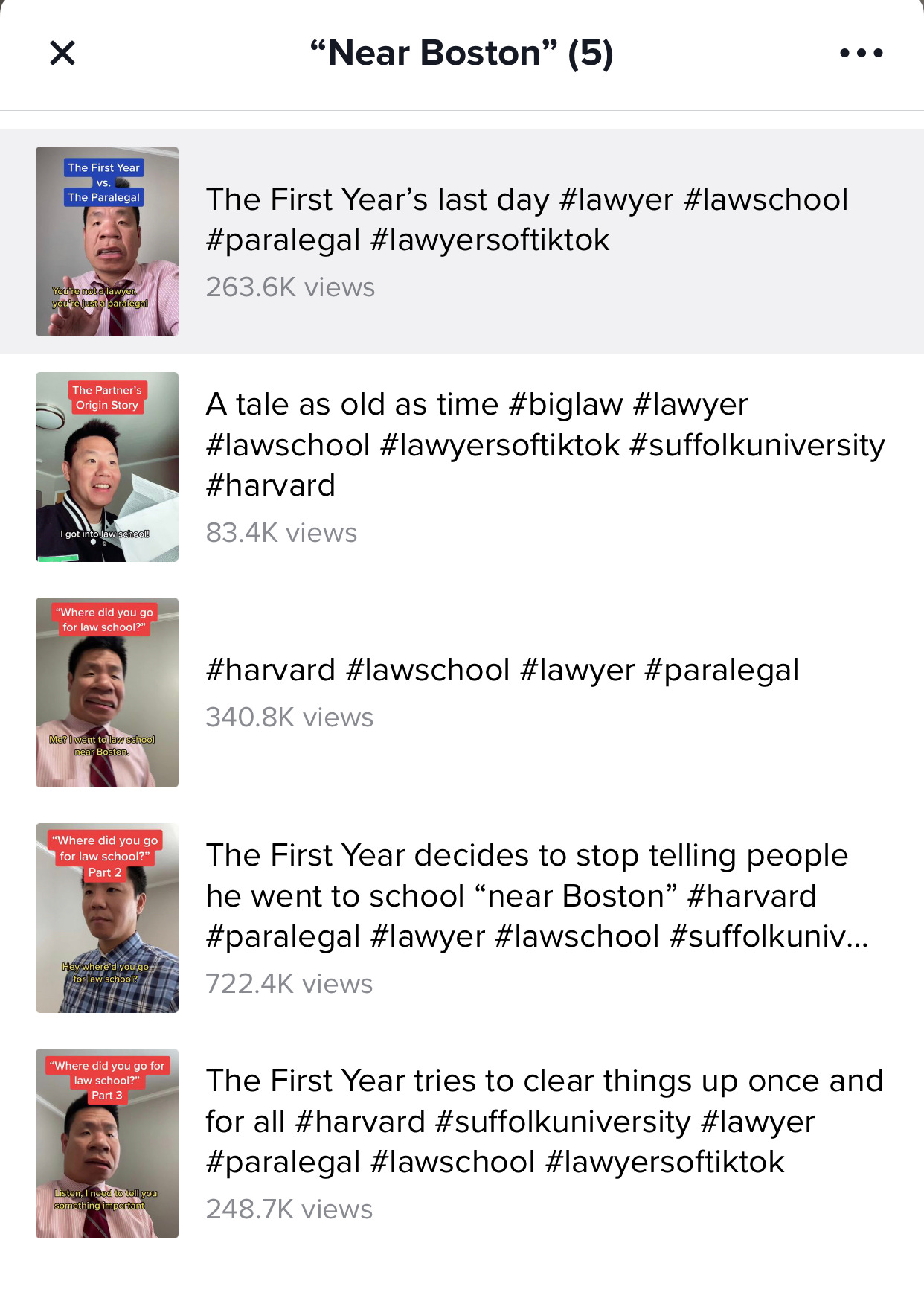Targeted Virality
The factors that enable you to go massively viral among the audience you're trying to reach
Over the past two weeks I’ve successfully launched a Tik Tok mini series. Maybe you’ve seen it. It involves a set of silly skits about life at a law firm, and a blowhard Harvard Law grad (you can watch Part 1 here). Over the past two weeks, the series has received over 1.7 million views across multiple platforms.
As many of you know, I’ve been experimenting and innovating with social media content over the past 6 years. And I’ve seen some success. When you create super compelling content, something magical happens.
It finds a way to reach all of the people you want to reach. I’m not just talking about going viral, which some of you may have experienced. I mean, I’ve gone viral before but it had such a limited impact because my content just ends up reaching a bunch of audiences I don’t really have an interest in.
No, what I’m talking here is about targeted virality. Going viral with the people you want to reach.
When you create compelling content for your key audience something truly magical happens. It generates like, a visceral reaction from the viewer or reader. They feel compelled to share it with their friends.
So in today’s article, I’ll discuss the three key factors behind creating targeted viral content.



